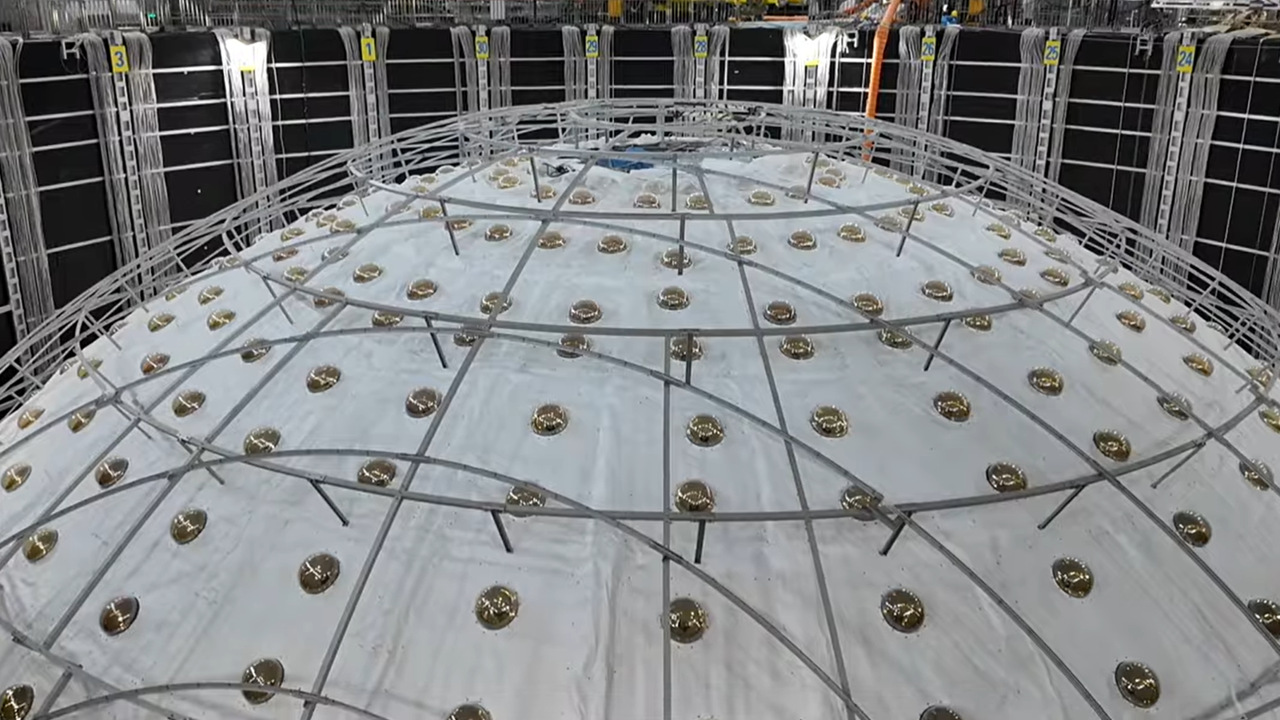With the help of a giant laboratory, China will overtake the United States in discovering the most mysterious particles in the universe – neutrinos.
The Jiangmen Underground Neutrino Observatory (JUNO) has been more than a decade in the making and is scheduled to be completed next year, at a cost of about $311 million. It is a stainless steel and acrylic sphere about 35 meters wide, designed to capture objects that… Unimaginable. Small, which is a measurement of subatomic particles moving at a speed close to the speed of light.
JUNO is on the finish line of construction. CGTV/YouTube
Although neutrinos – named after their electric charge – are everywhere in the universe – an estimated 100 trillion neutrinos pass through our bodies every second – we know very little about their behavior because they are so difficult to detect, he wrote. the world. Popular Science.
China enters the competition with high expectations
The researchers plan to achieve a historic achievement in the near future by solving the so-called hierarchy problem, and they want to be the first in the race.
Wang Jifang, head of the JUNO project and director of the Institute for High Energy Physics, during a very ambitious recent laboratory demonstration He said. “Being first means everything, being second means nothing.”
Experts have already proven for years that neutrinos occupy one of three group states – but which of them is the heaviest and which is the lightest remains a mystery.
However, if researchers shed light on this, they could contribute to a more complete construction of the Standard Model of particle physics and expand our knowledge of the inner workings of planets, stars and supernovas.
The comprehensive hierarchy results that JUNO is likely to reveal may force physicists to rethink existing scientific facts about quantum mechanics.
According to Patrick Huber, director of Virginia Tech's Center for Neutrino Physics, it would be a revolutionary discovery if the JUNO results show that what we know so far is wrong.
Once the laboratory is up and running, researchers will focus primarily on neutrinos emitted from two nuclear power plants located about 50 kilometers from the facility.
However, solving the neutrino problem is not as simple as measuring their mass, and experts say solving the hierarchy problem will take about six years of experiments and analysis.
During this time, a similar project will be launched at famous facilities such as the US-led Ice Cube Observatory in Antarctica and Japan's Super Kamiokande Neutrino Observatory.
So far, China appears to be leading the race, but anyone can be the first to solve the hierarchy problem – provided they have a deep understanding of the more complex cosmology.
Worth reading:












































